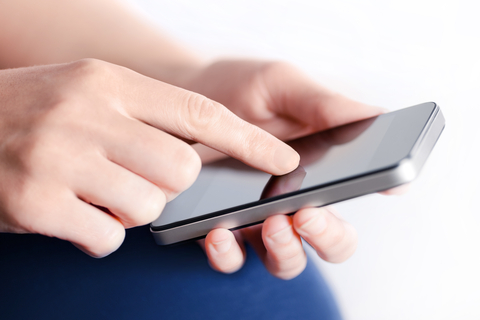Smartphones are just one of the personal digital technologies that were shown capable of shaping cortical sensory processing in the modern human brain, according to findings from a study recently published in the journal Current Biology.
First author of the study, Anne-Dominique Gindrat, MS, is a PhD candidate who has published previous investigations about difference in hand dominance and whole-scalp electroencephalography (EEG) mapping. Those studies were on non-human primates, whereas the recent article, “Use-Dependent Cortical Processing from Fingertips in Touchscreen Phone Users,” was based on a study with human subjects.
The study pointed out that smartphone users demonstrate an enhanced thumb sensory representation in the brain, and that brain activity is proportional to use accumulated over the previous 10 days.
Another significant finding noted from the study is that an episode of intense use is transiently imprinted on the sensory representation. And, in addition, sensory processing in the brain is adjusted on demand by touchscreen phone use.
The study abstract points out that cortical activity allotted to the tactile receptors on human fingertips are related to the level of skill with which a hand is used. Surgeons, masterful musicians, or video game players may exhibit a higher degree of response to touch on certain portions of their fingers than individuals who do not have highly developed touch skills. Similar characteristics are also found among certain primates who are trained in grasp-and-release skills.
Electroencephalography was used by the researchers to measure the cortical potentials in response to mechanical touch on the thumb, index, and middle fingertips of study subjects who used touchscreen phones, as well as those who used older styles of mobile phones. All three fingers demonstrated higher cortical potentials among those who used touchscreen phones.
The authors note: “Our results suggest that repetitive movements on the smooth touchscreen reshaped sensory processing from the hand and that the thumb representation was updated daily depending on its use.”
[Source: Current Biology]





